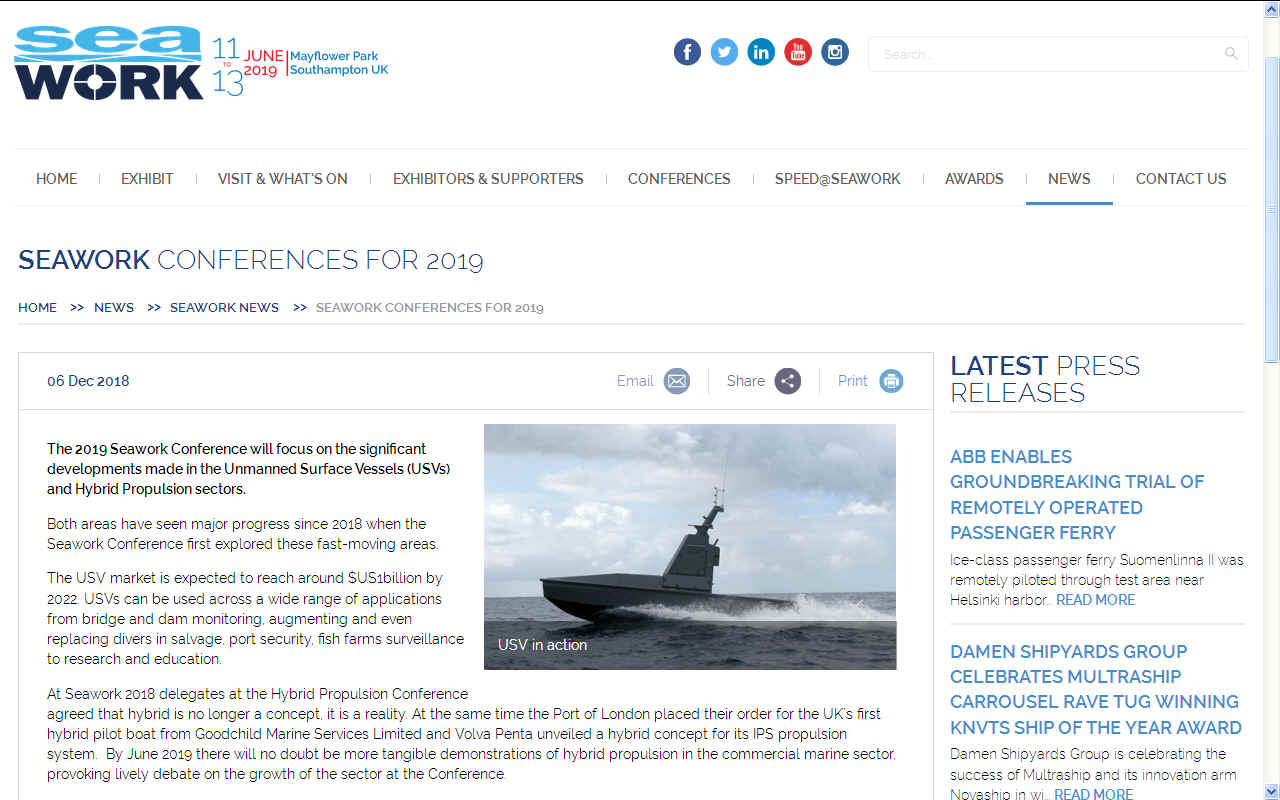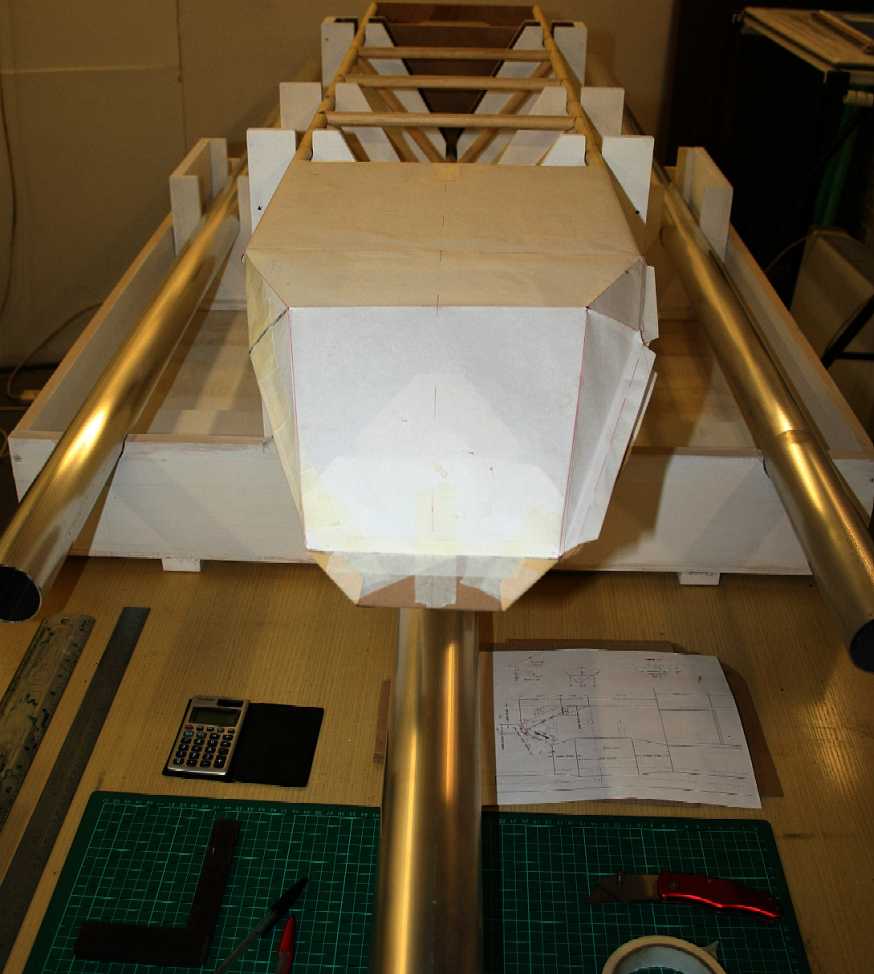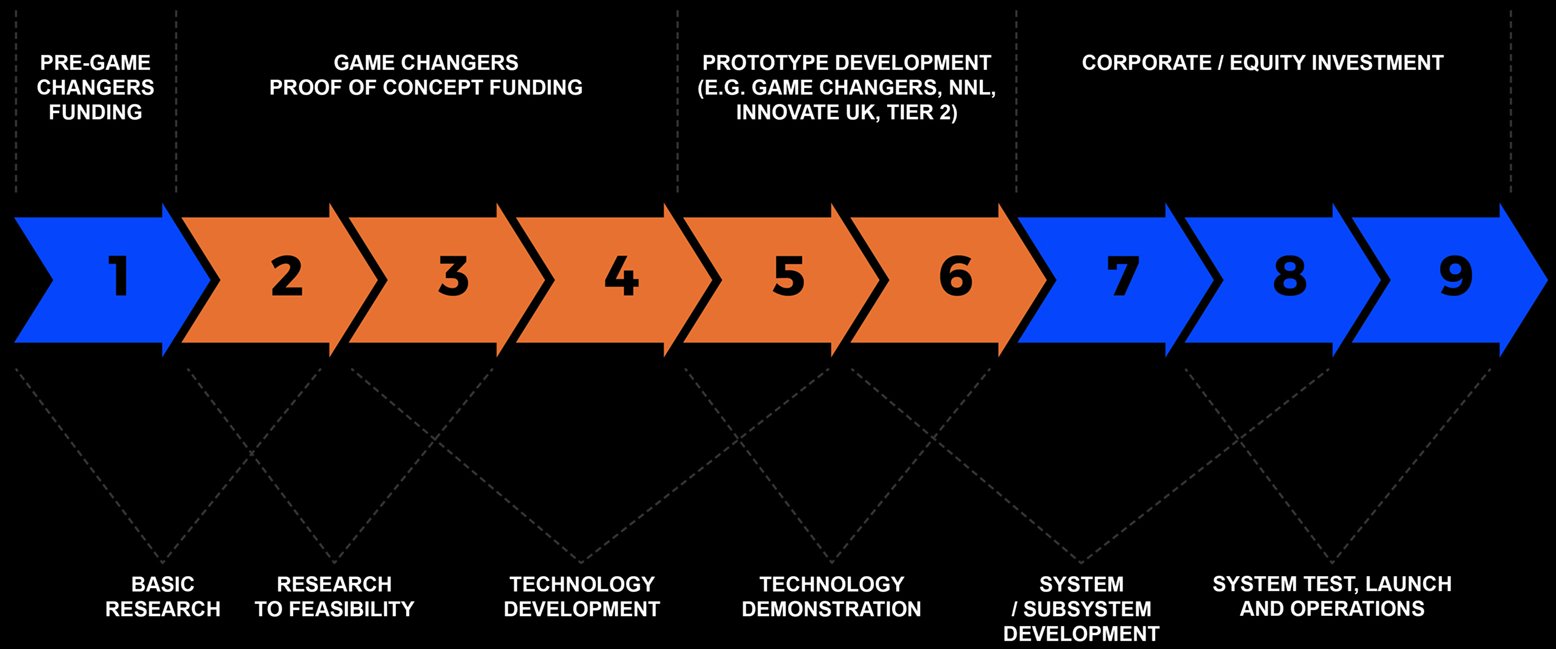|
AUTONOMOUS PLATFORMS ASVs
ABOUT - CONTACTS - DONATE - FOUNDATION - HOME - A-Z INDEX
AUTONOMY IN ACTION - This is the SeaVax. It requires autonomy in terms of energy acquisition for propulsion and filtration operations. It also requires robotic navigation for COLREGs compliance and fleet coordination. No mean feat!
Autonomy has come on apace since the Foundation got involved with SeaVax. For those of you new to the subject, when referring to marine transport the term has two meanings:
1. Energy self sufficiency 2. Unmanned or robot vessels
A vessel that uses either one of these elements can be classed as autonomous to a degree. Though clearly an energy self-sufficient boat is not truly autonomous because it is not unmanned, or is not capable of operating without a human operator onboard. Unmanned, can also mean remote controlled drones. So we have to be specific as to which capacity any vessel may fall into. The classification of such vessels has yet to attain proper categories by ABS, ClassNK, DNV GL or Lloyds.
The Foundation is working to combine both technologies in one basic platform that might be adapted to various purposes in the blue economy for what is known as blue growth, a phrase coined by the United Nations and European Union. The Unmanned Surface Vessel (USV) market is expected to reach around $US1billion by 2022, creating a new technology market for those companies who provide systems to convert older vessels, or equip from new, vessels that are being built.
USVs can be used across a wide range of applications from bridge and dam monitoring, augmenting and even replacing divers in salvage, port security, fish farms, surveillance, through to research and education.
[LEFT] FASTEST - What is probably the world's fastest autonomous surface vessel concept is presently under construction as a one-twentieth scale model for tank testing. Named the Elizabeth Swan after the Governor's daughter in Disney's Pirates of the Caribbean, this concept is being developed as part of the Kulo Luna story about a humpback whale that befriends many humans that she comes into contact with.
[RIGHT] AUTONOMY IN ACTION - This is the SeaVax. It requires autonomy in terms of energy acquisition for propulsion and filtration operations. It also requires robotic navigation for COLREGs compliance and fleet coordination. No mean feat! The Technology Readiness Level of such craft is still considered to be at the starting post due to a lack of funding for creative people in the civil arena, whereas there is ample funding for military applications. This disparity in the distribution of state support is seen as being a major stumbling block to discrimination free enterprise and so advancement of the state of the art.
The cost of operations for a SeaVax, taking into account depreciation over 10 years from a purchase price of $10million would be around $2,740+ 10% (medium level of servicing) = $3,014.
The value of 150 tons of plastic at current rates (@ $0.07 cents/kg for unsorted waste) = $10,500 in the UK. 150 tons is the load carrying capacity of a SeaVax. A likely daily plastic catch in medium yield areas might be 5-10 tonnes = $350-700. Hence, SeaVax would be operating at a loss of $2,314 dollars a day in medium yield areas.
In high yield areas we might expect 10-40 tonnes a day = $2,800/day, giving a loss of $214 dollars a day. We'd need to catch at least 50 tons a day of PET to cross over the threshold into a profit situation.
Where the average price for recycled plastics is around $235 per tonne in the UK, we'd need to recover 20 tonnes to make $4,680, turning a profit of $1,666 dollars a day.
Depreciation of a SeaVax over 20 years significantly improves the situation in terms of operations profitability where the day cost = $1,370 + 20% = $1,507. Then at 10 tons a day we'd make $2,350 minus $1,507 = $843/day, or $307,000 per year per vessel. Copyright photographs © Cleaner Ocean Foundation. All rights reserved.
DARPA - Not a million miles away from the Elizabeth Swan in concept in that we have a trimaran configuration very much like the Cable and Wireless Adventurer and the subsequent Triton of the British Royal Navy, both Nigel Irens designs from many years ago, suggestive of involvement or at least providing some of the inspiration for the DARPA project. This is though a diesel powered boat with a limited range, hence limited endurance belying the claim as to "continuous trail" as per the article below on the UST site. Navies around the world are unlikely to invest in solar and wind technology due to their love affair with diesel and nuclear power. Indeed, the level of development would require considerable investment in lateral thinking to improving the operational speeds from vehicles powered by nature, ruling out involvement by the military - who are not into such creative thinking. This leaves the development of clean ships to the commercial sector, or to not for profits and think tanks like the Foundation. The US Navy's 'Sea Hunter' drone is smaller than either the Elizabeth Swan or the SeaVax.
Sea Hunter holds 14,000 gallons of diesel that equates to a range of 10,000 nautical miles = 1.4 gallons per nautical mile at 12 knots. The cost of operations is reported to be $20,000 per day compared to $700,000 per day for a destroyer. The costs of operations for a military version of the Elizabeth Swan = $5,000/day. Is this not a good case for zero carbon peacekeeping?
Like the Sea Hunter, SeaVax is intended to be operational through Sea State 5, waves up to 6.5 ft (2.0 m) high and winds up to 21 knots (24 mph; 39 km/h), and survivable through Sea State 7, seas up to 20 ft (6.1 m) high. The trimaran hull provides increased stability without requiring a weighted keel, giving a higher capacity for linear trajectories and better operations in shallow waters.
NOV 30 2016 - UNMANNED SYSTEMS TECHNOLOGY
- Leidos has announced that it is beginning operational testing of the technology demonstration vessel it is developing for the Defense Advanced Research Projects Agency (DARPA)’s
Anti-Submarine Warfare Continuous Trail Unmanned Vessel (ACTUV) program. Testing will occur off the coast of San Diego, California, and follows the successful completion of performance trials.
TRL 1 - TRL 2 - TRL 3 - TRL 4 - TRL 5 - TRL 6 - TRL 7 - TRL 8 - TRL 9 - TRL 10
TRL SCALE - The TRL scale is a metric for describing the maturity of a technology. The acronym stands for Technology Readiness Level. The scale consists of 9 levels. Each level characterizes the progress in the development of a technology, from the idea (level 1) to the full deployment of the product in the marketplace after level 9.
SEAWORK 2019 USV
CALL FOR PAPERS
LINKS & REFERENCE
https://www.seawork.com/seawork-conference/commercial-marine-conference/2019-usv-call-for-papers https://www.seawork.com/news101/seawork-news/seawork-conferences-for-2019
MARINE LIFE - This humpback whale is one example of a magnificent animal that is at the mercy of human activity. Humans are for the most part unaware of the harm their fast-lane lifestyles are causing. We aim to change that by doing all we can to promote ocean literacy to help reduce our plastic, food and carbon footprints.
This website is provided on a free basis as a public information service. Copyright © Cleaner Oceans Foundation Ltd (COFL) (Company No: 4674774) 2024. Solar Studios, BN271RF, United Kingdom. COFL is a charity without share capital. The names Amphimax™ RiverVax™ and SeaVax™ are trademarks.
|





